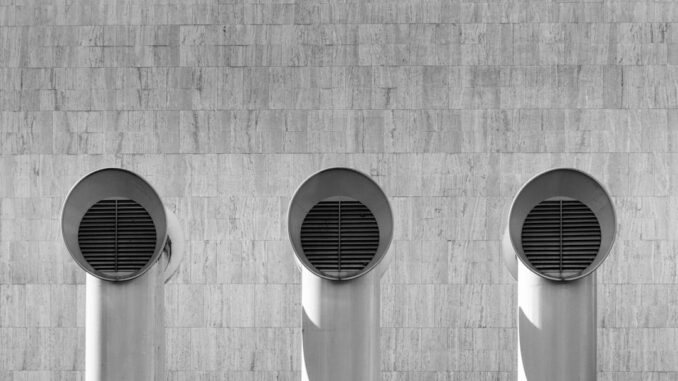
Summary
This article provides a step-by-step guide for maximizing energy efficiency in new buildings by focusing on maintaining clear ventilation. It emphasizes the importance of unobstructed vents for optimal airflow and energy savings, outlining preventive measures and troubleshooting steps. By following these guidelines, you can significantly reduce energy consumption and enhance the overall performance of your HVAC system.
Successful low-energy building design hinges on careful planning. Focus360 Energy can help.
Main Story
Alright, let’s talk about something crucial for new building energy efficiency, and it’s probably not what you think first: unobstructed vents. Yeah, it’s simple, but believe me, blocked vents can completely sabotage even the best-designed HVAC system. Think of it like trying to breathe through a straw – your system has to work way too hard, sucking up more energy than it should. So, how do we keep those vents flowing freely? Here’s a breakdown:
Step 1: The Initial Sweep
First things first, you’ve gotta do a proper walk-through, think of it as a treasure hunt, but instead of gold your looking for blockage. Go around, check all the supply and return vents in the building. I know, it’s a bit boring but it’s important. Look for anything obvious – furniture, rugs, maybe some rogue building debris. Don’t forget those less used areas too, they’re often the culprits. And then you will need to rank them – which ones are looking really bad, and which are just a little bit off.
Step 2: Clear the Debris
Okay, now comes the satisfying part of doing a bit of clearing up.
- Furniture & Rugs: Got a desk right in front of a vent? Move it! I mean, we are not talking a lot here, just keep furniture at least a foot away from the vents, just to give it space to breathe.
- Dust & Debris: Grab your vacuum – the one with the brush attachment is ideal. Get rid of any dust and general ick that’s collected around the openings. It’s surprising how much can build up.
- Internal Issues: Now this can be tricky. If you think there’s something jammed inside the vent, get a flashlight. See if you can grab it with some kind of tool, like a grabber or flexible wire, but if it’s too deep, don’t go digging around, you’ll need to call in the pros!
Step 3: Prevention is Key
Once it’s all clear, let’s keep it that way. It’s much easier than it sounds.
- Regular Cleaning: Set up a schedule for cleaning these vents. Vacuuming, dusting, whatever works, just do it regularly to avoid build up.
- Vent Covers: You might want to use vent covers or grilles, you know the ones that stop things from falling inside? It’s a small investment that can save you time and hassle.
- Construction Watch: This is important during construction: make sure those vents are protected! I remember working on a site once and, honestly, the amount of building dust that gets everywhere is crazy. Use covers or tape to seal them up until the builders are finished.
- Education: Let the building occupants know why it’s important to keep vents clear. It’s not just about being tidy, it is saving everyone money and energy!
Step 4: Troubleshooting Time
So, you’ve done all that and still have airflow problems? Don’t panic, there could be other factors.
- The Air Filter: That poor filter is probably working overtime. Replace it regularly, usually every 1-3 months, and if you haven’t in a while, that should be the first step.
- Ductwork: Have a look at the ductwork for any leaks, kinks, or disconnections. Seriously, these can cause major issues. If you spot something suspect, it’s time to get an HVAC professional on the phone.
- Call an expert: If you are truly stumped, don’t be afraid to get a pro in for a professional HVAC inspection, sometimes having a fresh set of eyes is all you need to figure it out, or sometimes its a bigger issue.
In the end, keeping your building’s vents clear isn’t rocket science. But it’s the small things, right? It’s a worthwhile investment that pays dividends by cutting down energy usage, improving indoor air quality, and increasing comfort for everyone in the building. And honestly, who doesn’t want that?


The point about construction dust is particularly relevant; sealing vents during building work is crucial and often overlooked. What strategies do you find most effective for enforcing this on-site?
Absolutely, the construction dust issue is key. I’ve found that incorporating vent protection into the site safety checklist is effective. Regular toolbox talks that emphasize this and show consequences can boost compliance, and also making it part of the site inspection is helpful too. Let me know what you’ve found works best also?
Editor: FocusNews.Uk
Thank you to our Sponsor Focus 360 Energy – https://focus360energy.co.uk
The emphasis on regular cleaning schedules for vents is key; consistent maintenance, as opposed to ad-hoc efforts, likely yields better long-term energy savings and improved air quality.
I totally agree! A consistent approach to vent maintenance, like a regularly scheduled sweep, is crucial for long-term results. It’s great to see you highlight the difference between planned and ad-hoc efforts; it really makes the difference for efficiency.
Editor: FocusNews.Uk
Thank you to our Sponsor Focus 360 Energy – https://focus360energy.co.uk
I appreciate the emphasis on occupant education; it’s often overlooked. Perhaps incorporating visual cues, like stickers or posters, near vents could help maintain awareness and encourage compliance.
I’m glad you found the emphasis on occupant education important! Your suggestion of visual cues is fantastic. Stickers or posters near vents could definitely serve as a great reminder and keep everyone engaged in maintaining clear airflow. This could also tie into wider awareness campaigns, making it a team effort.
Editor: FocusNews.Uk
Thank you to our Sponsor Focus 360 Energy – https://focus360energy.co.uk